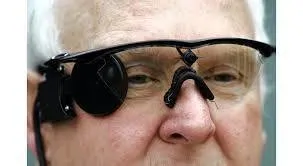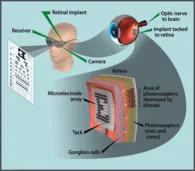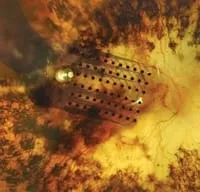The system contains an eyeglass-mounted video camera connected via a cable to a patient worn processing unit. The transformed video information is sent back to the eyeglasses and transmitted wirelessly to the antenna of the retinal implant on the macula.
The Argus II Retinal Prosthesis System (“artificial retina”) is FDA approved for patients with advanced retinitis pigmentosa (RP). It is for patients who are blind or have extremely poor useful vision.


The system is designed to help patients distinguish between light and dark. It will tell patients where large objects are, where the windows and doors are, and hopefully where sidewalks and curbs are located.


This retinal implant technology is designed to improve the quality of life for patients who have lost most of their vision, the implant give close to 20/20 vision. The system does allow patients recognize shapes, reading large letters (9 inches high), climbing stairs, walking through doors without a cane, and even detect some street signs. The image is more like a grainy black and white film than a high definition movie we are used to. At this stage, the electrode array is not able to be finely tuned enough to produce the same detail as a human retina.
The implant has electrodes that stimulate healthy retina cells to send information to the optic nerve. The brain then “sees” spots and patterns of light. Through rehabilitation, the patient learns to interpret these patterns for discerning and identifying the location and movement of objects and people.

There are 10,000 patients with advanced RP in the country and the estimated cost of the unit is around $100,000.
